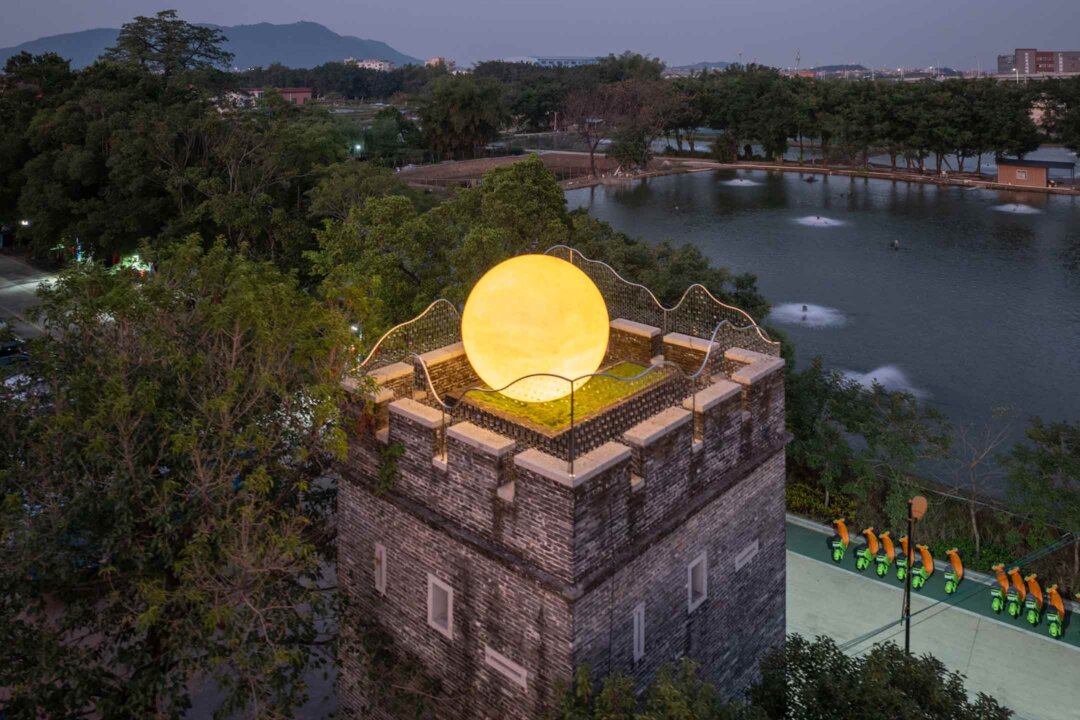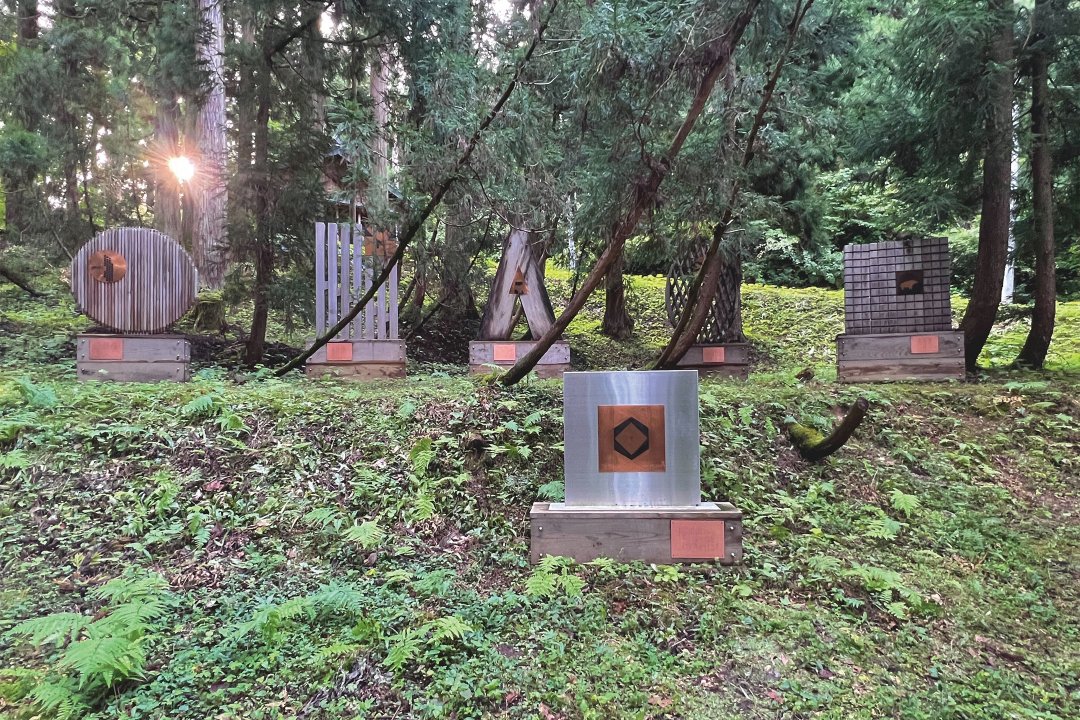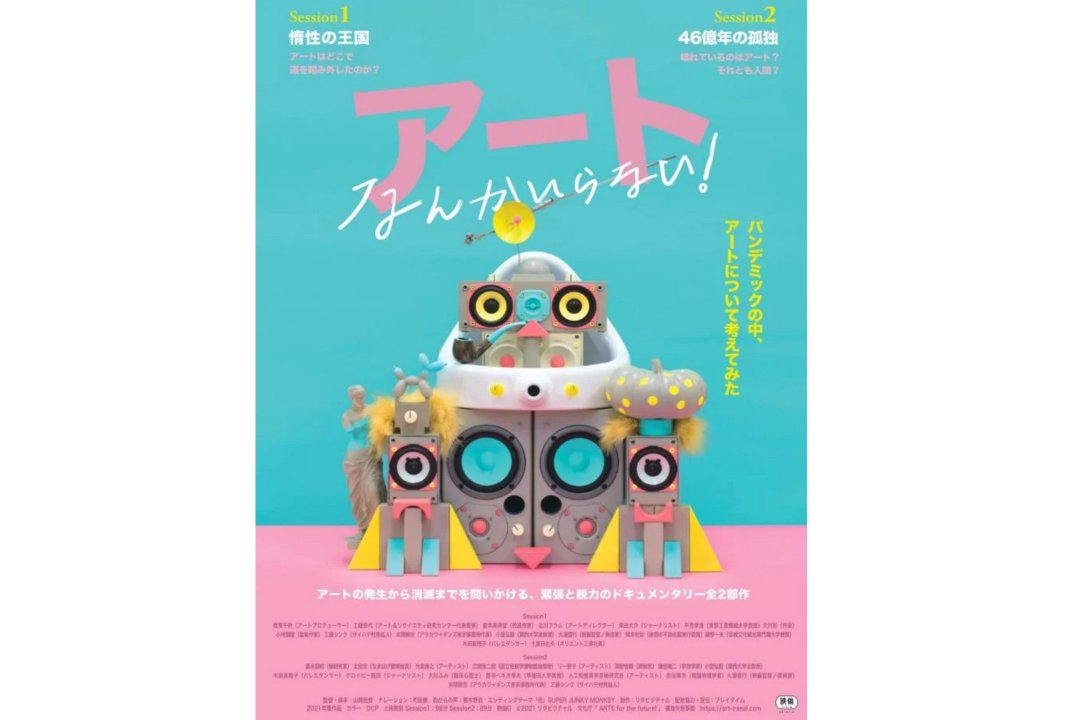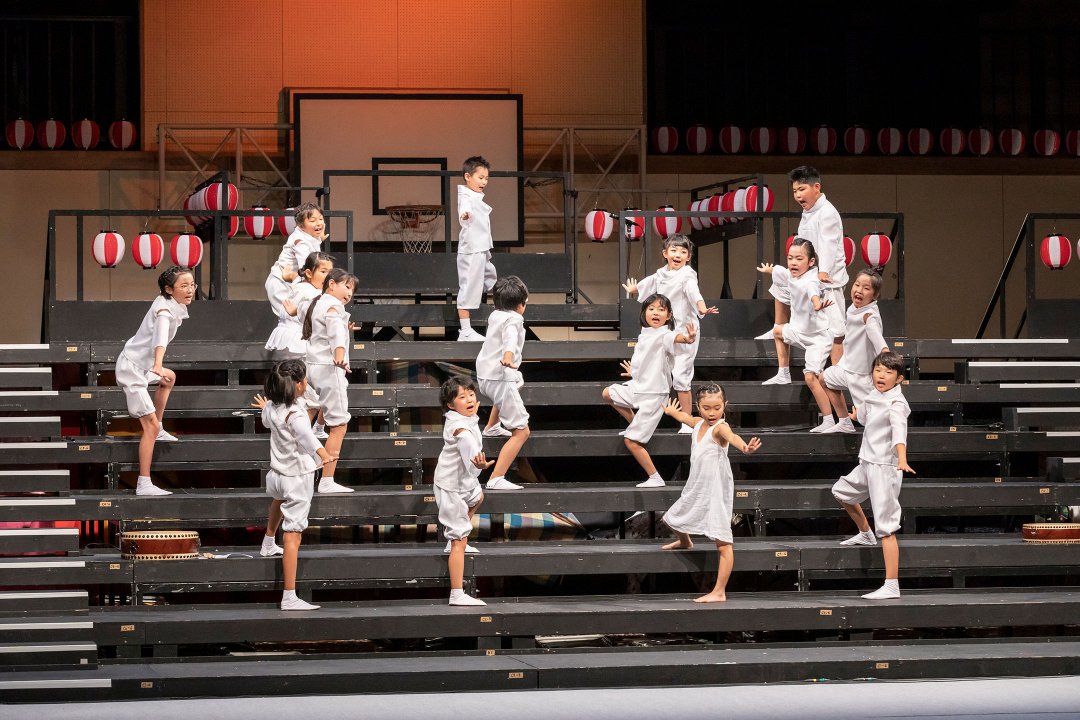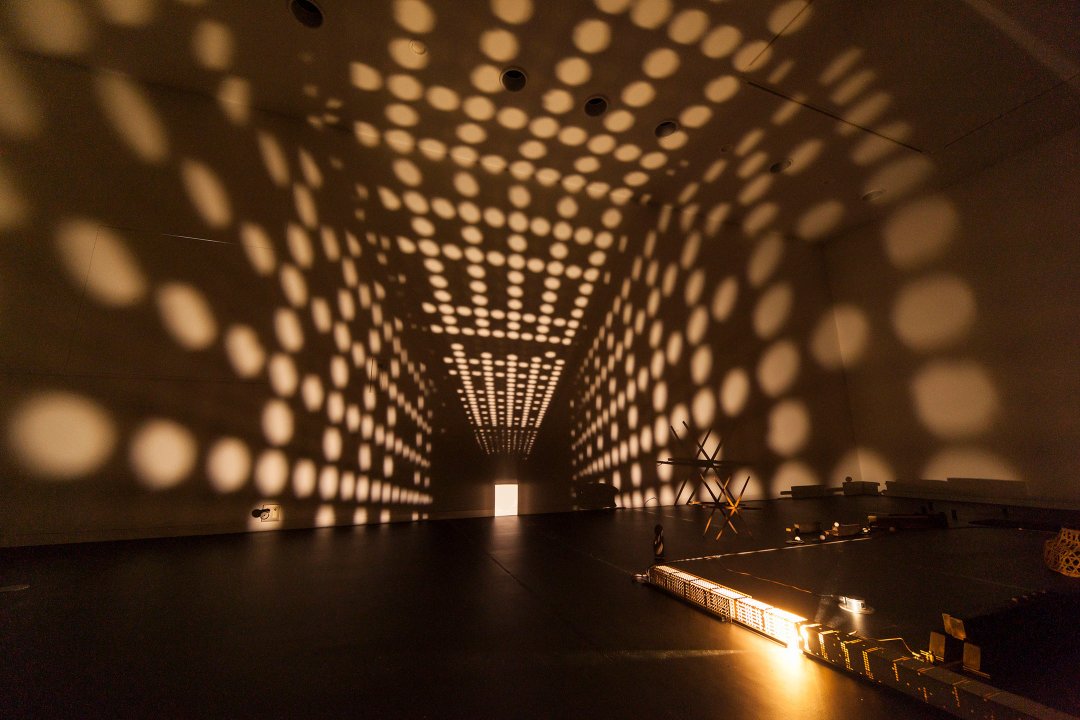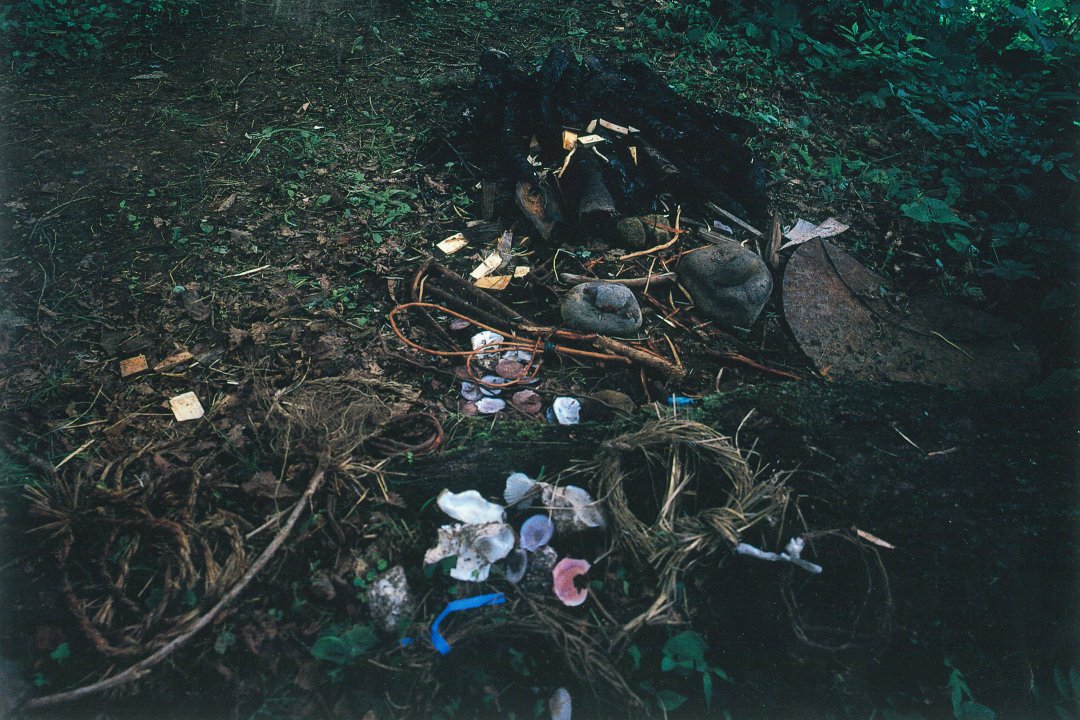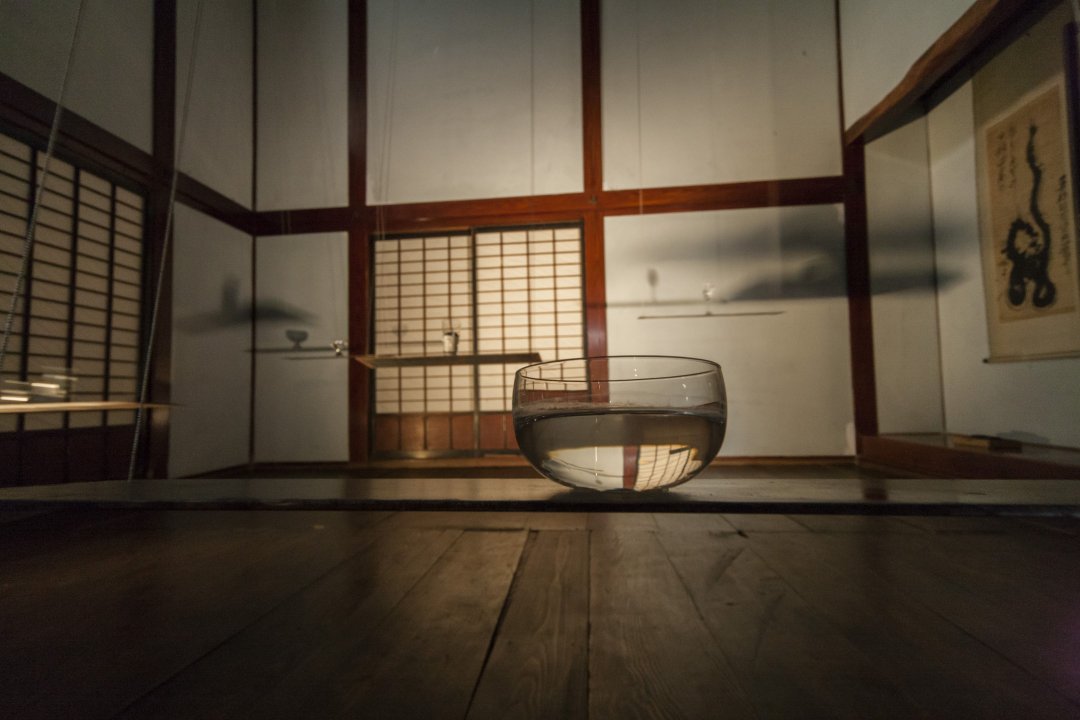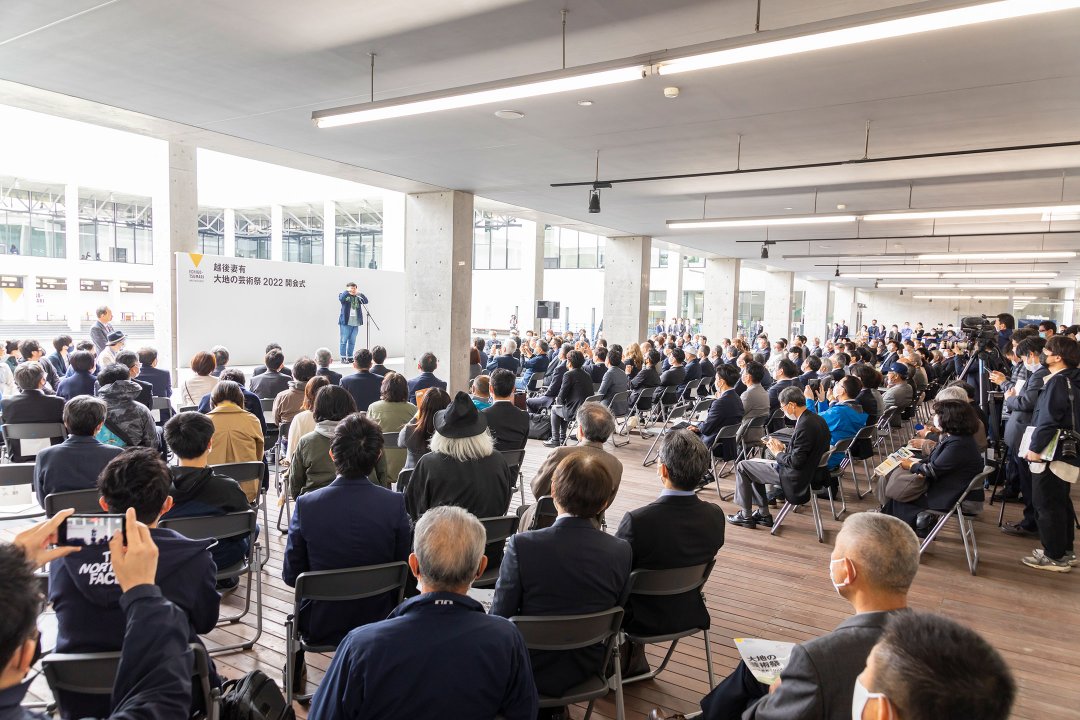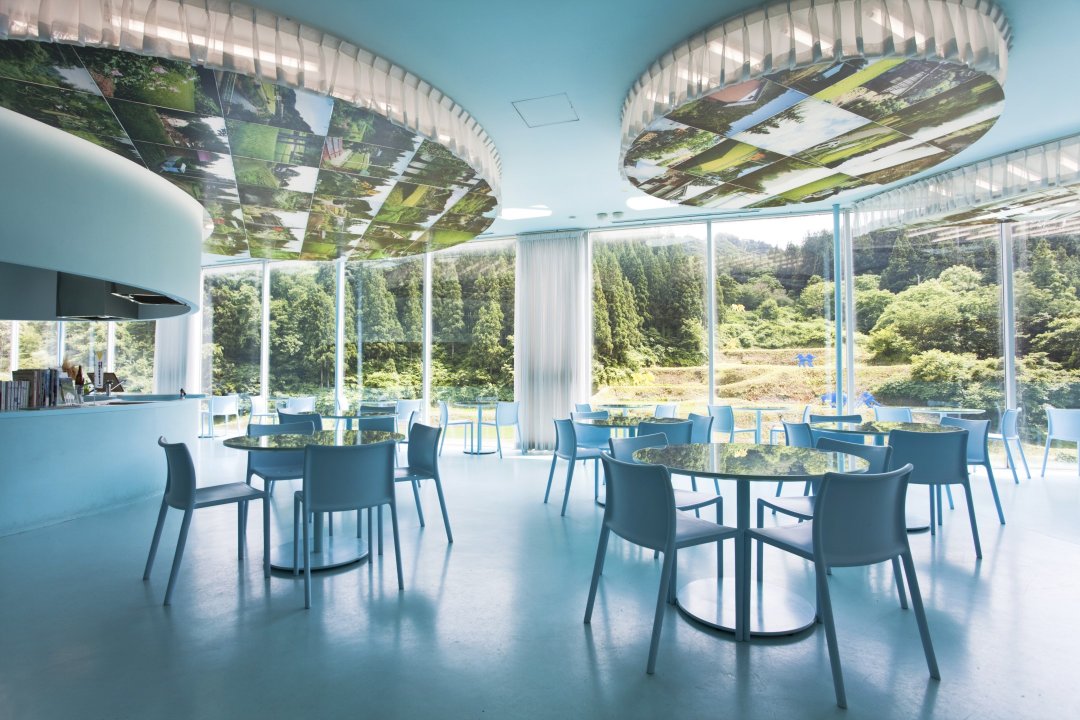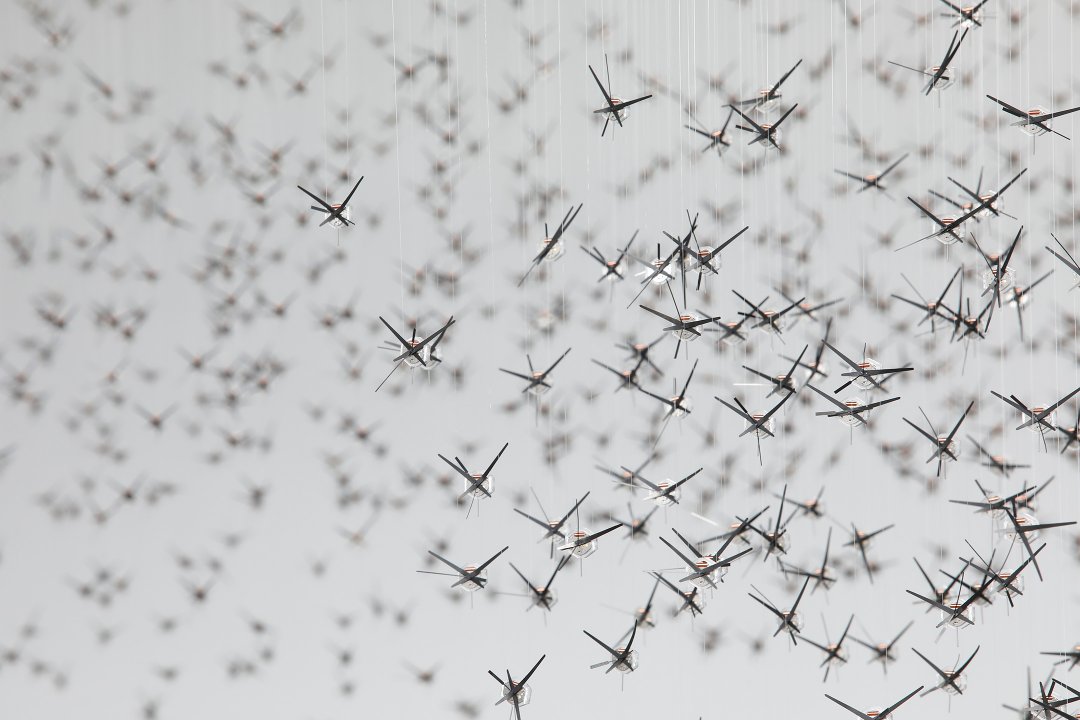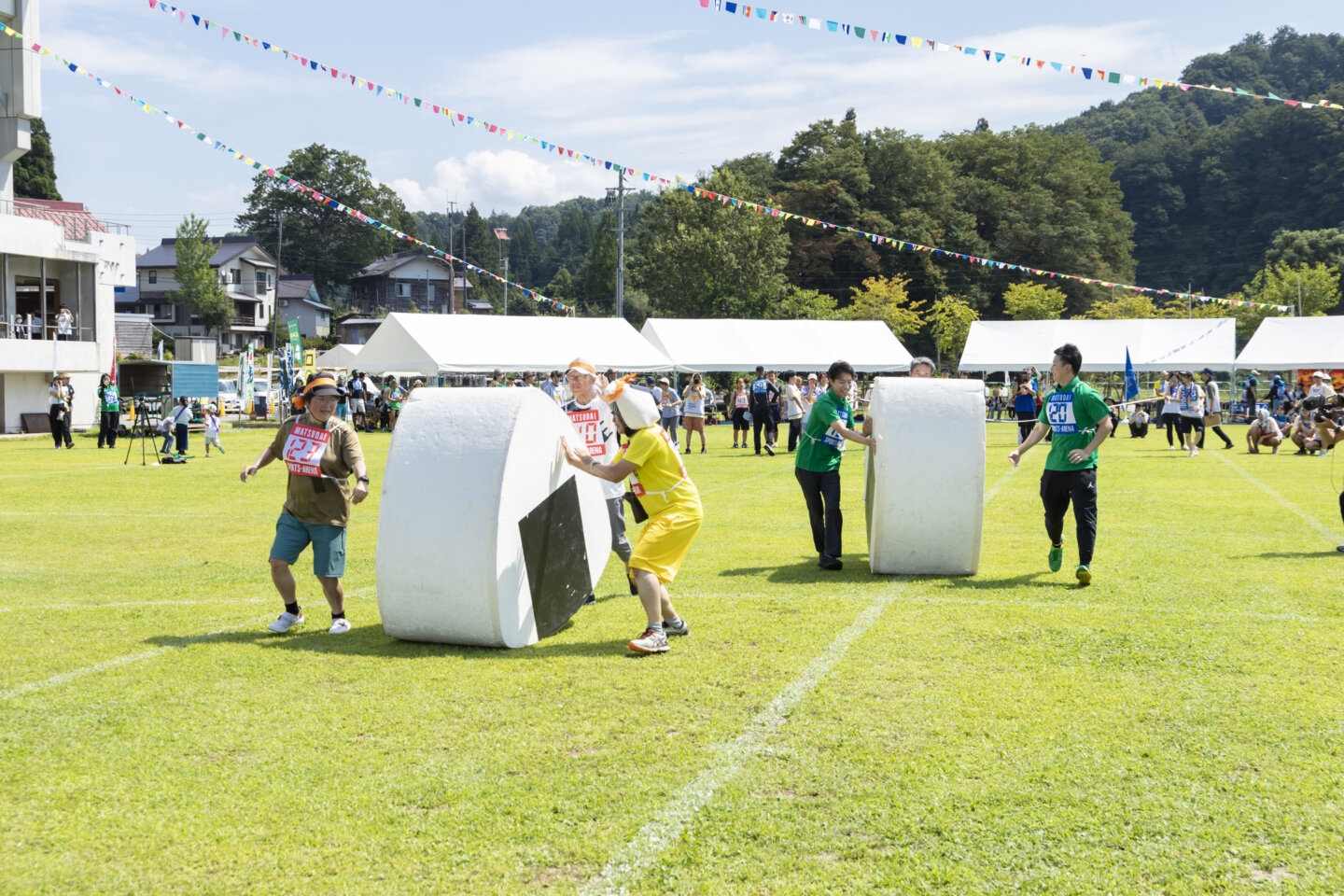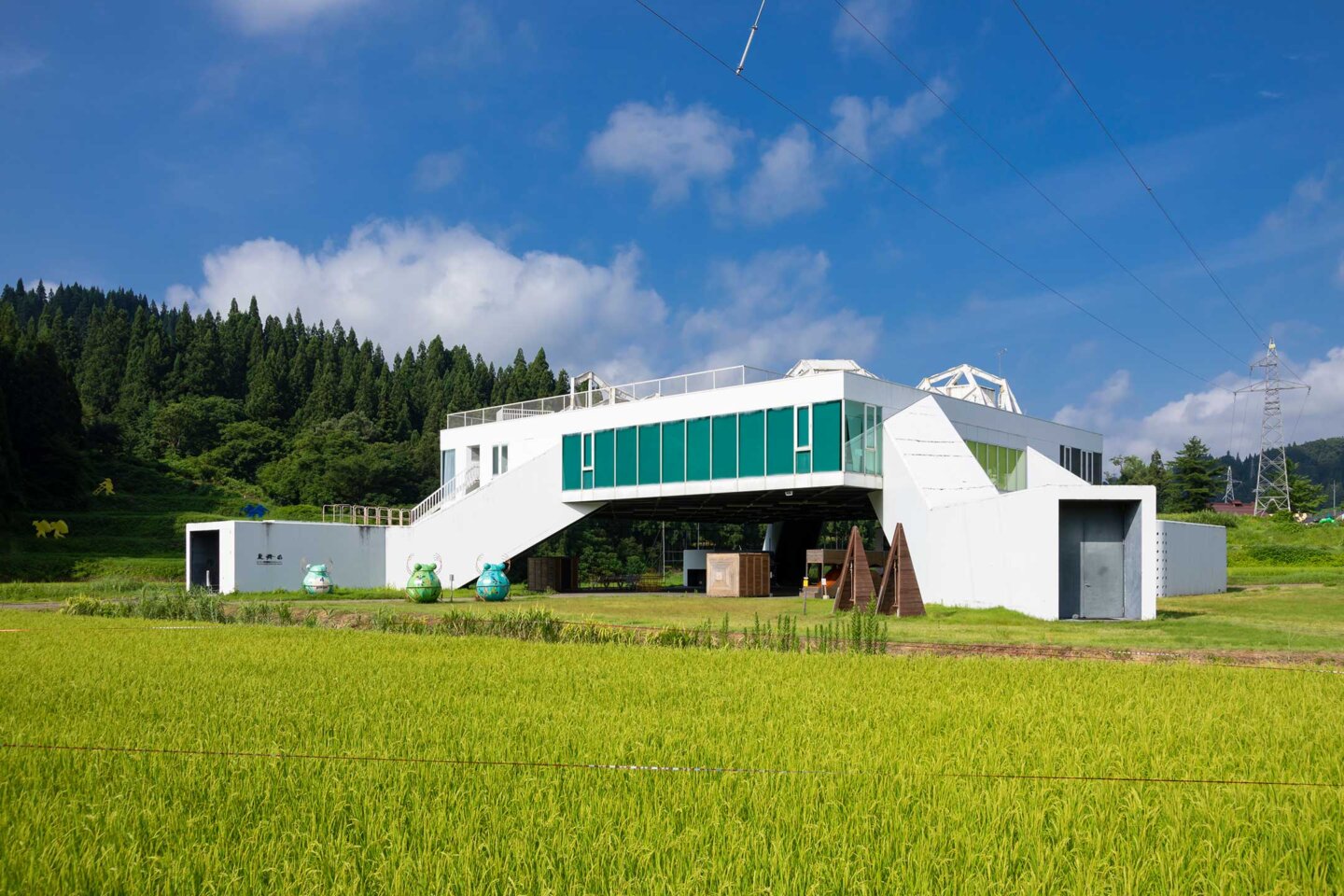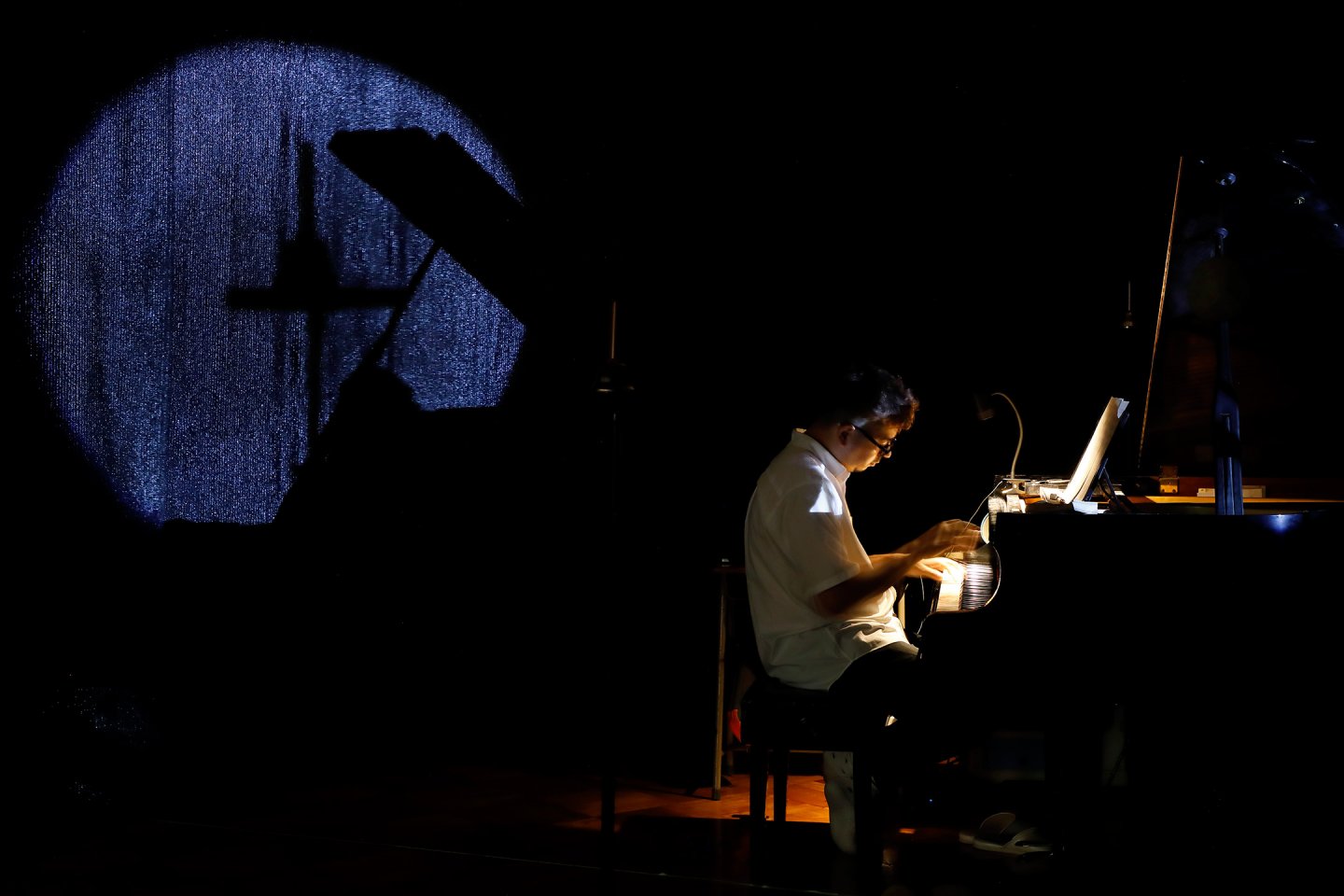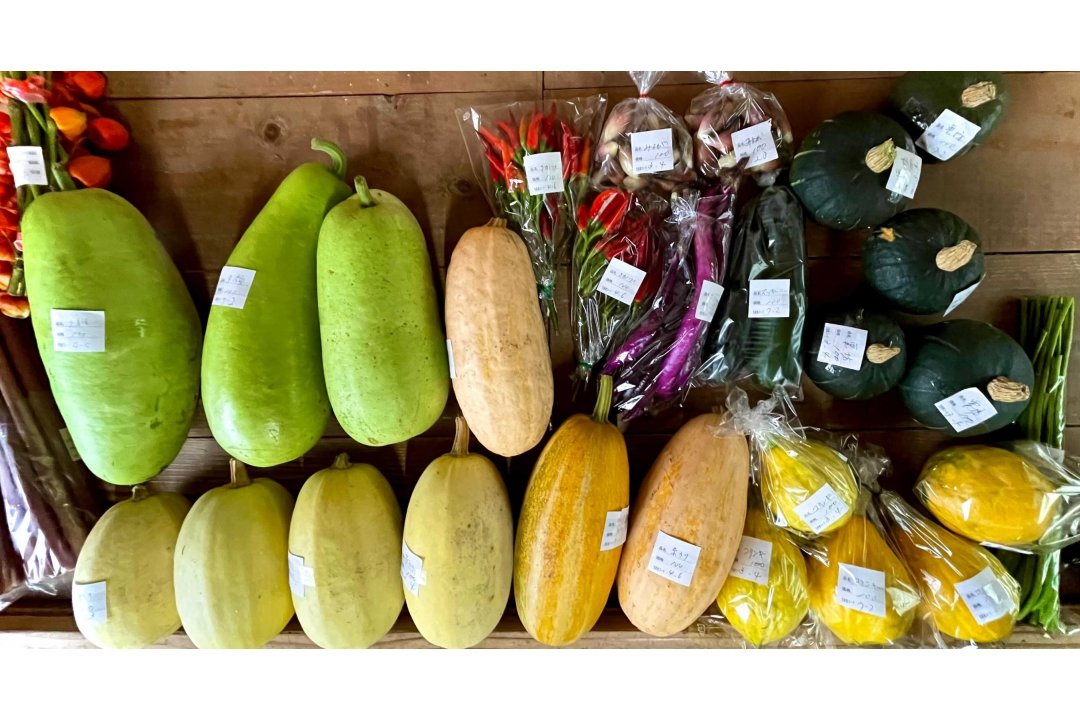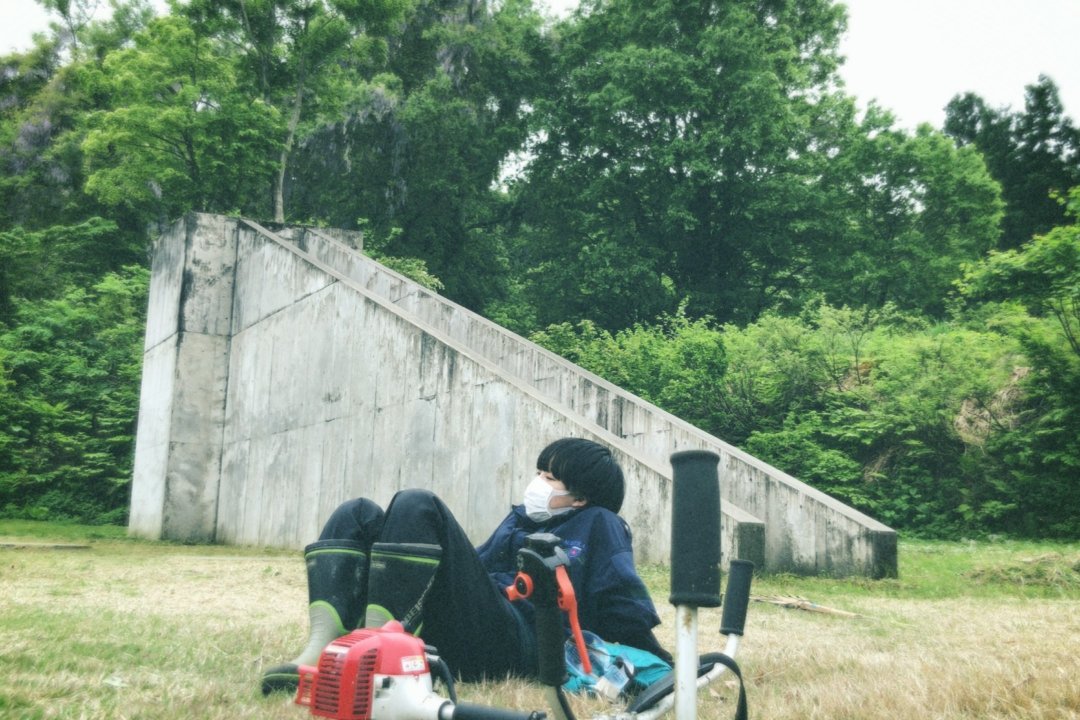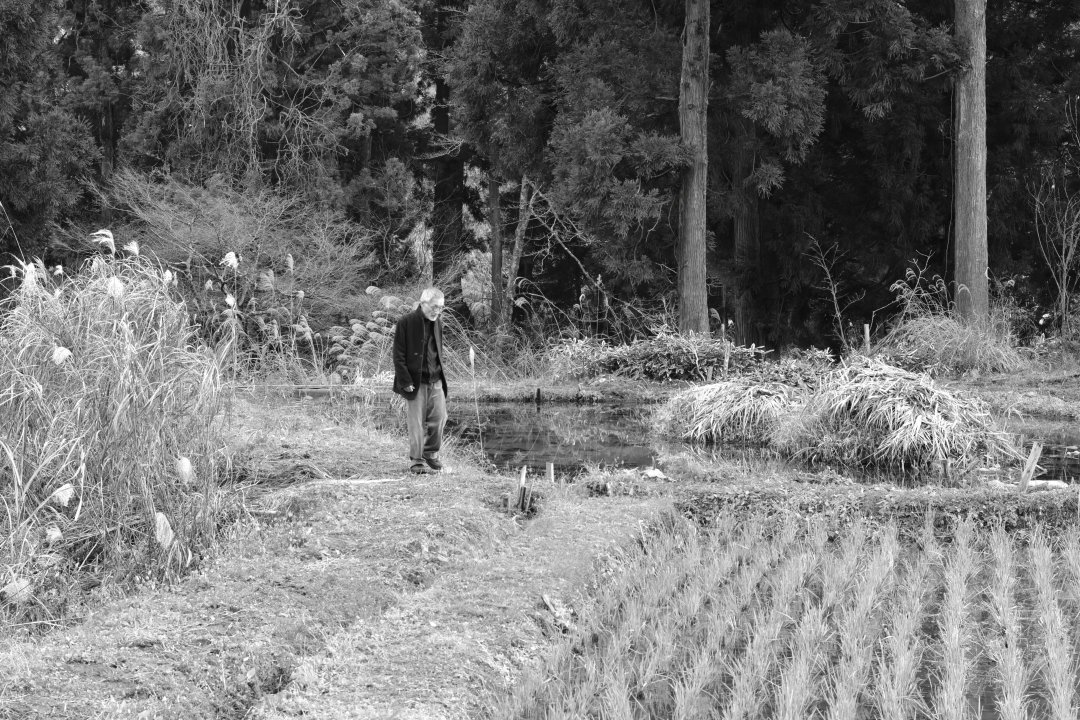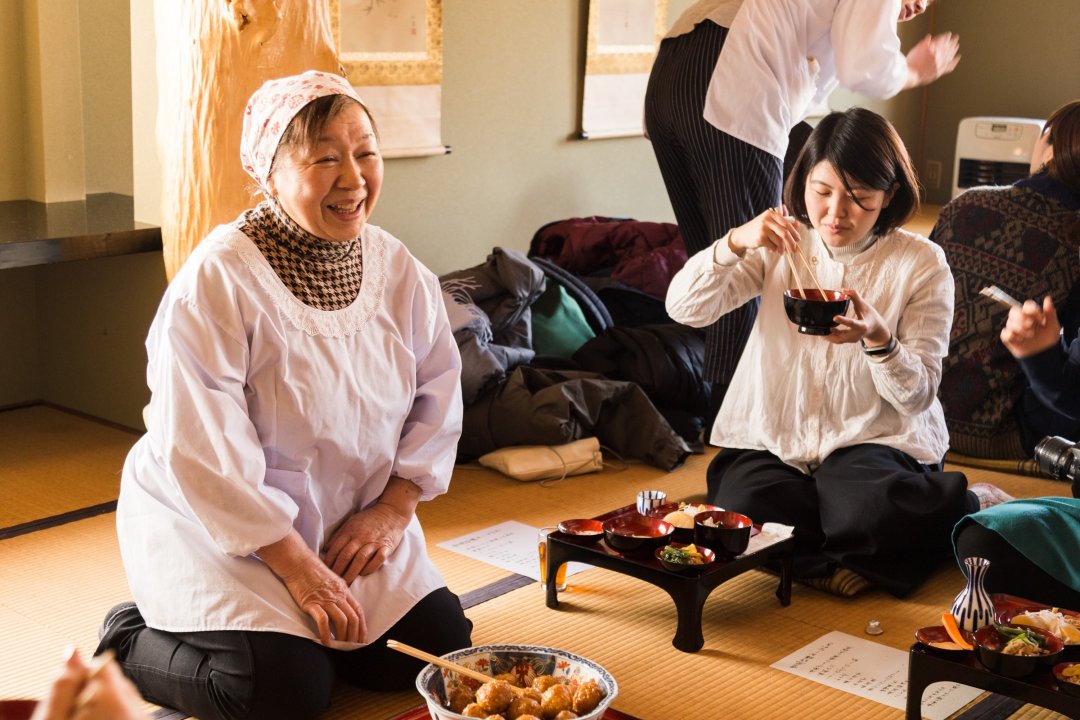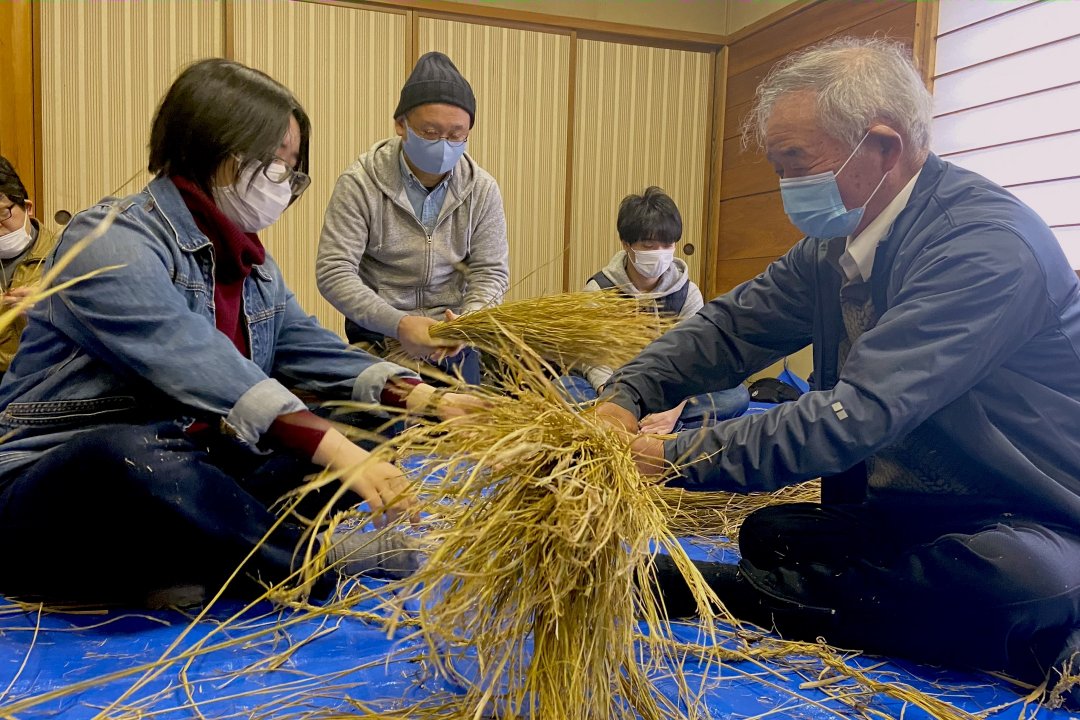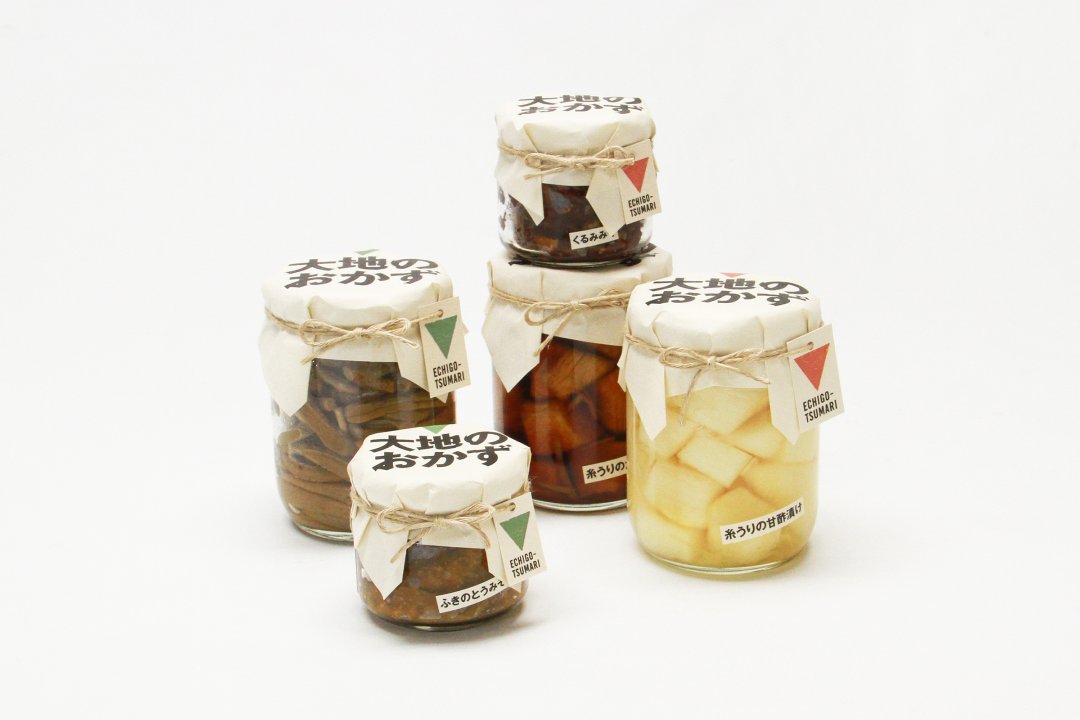Thinking 21st century art in the world from Niigata
Echigo-Tsumari Art Field - Official Web Magazine
Feature / Visiting Echigo-Tsumari with him, Vol.1-1
Strength in “Locality” and “Tradition” – what Yuta Orisaka treasures
Yuta Orisaka (Singer song writer)
You will experience many encounters when you visit the Echigo-Tsumari Art Triennale. Magnificent natural landscape, heart-warming local people, delicious meals and artworks unique to their sites. One person travelling the Echigo-Tsumari Art Field is a singer song writer, Yuta Orisaka, Heisei-born musician noted for his unique perspective of the world and alternative voice. He released an album called “Heisei” in 2018 followed by a new song “Asagao” in 2019 which was used for a soap opera on TV in September. What kind of landscape did he see in Echigo-Tsumari when returning after 10 years.
text: Haruya Nakajima photo: Nozomu Toyoshima editor: Shinichi Uchida CINRA.NET editorial team: Tomoyuki Miyahara
28 September 2019
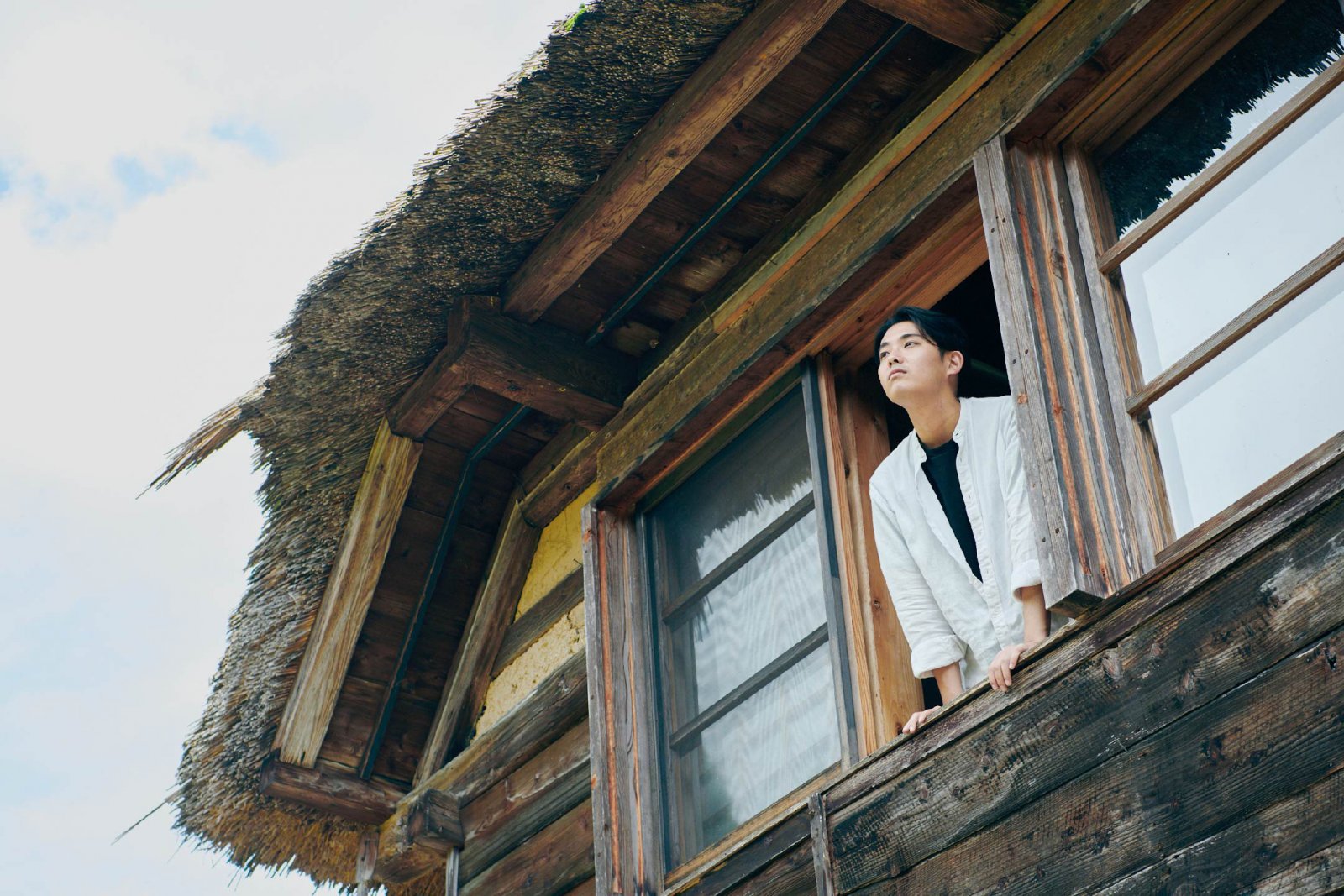
Looking into the sky / “House of Light” – meditating art
Upon arrival at Echigo-Tsumari, Yuta Orisaka spoke softly, “I am back here” as hegazed at fields and trees spreading out in front of his eyes. Orisaka loves art and has told us that he visited the Echigo-Tsumari Art Triennale in 2009.
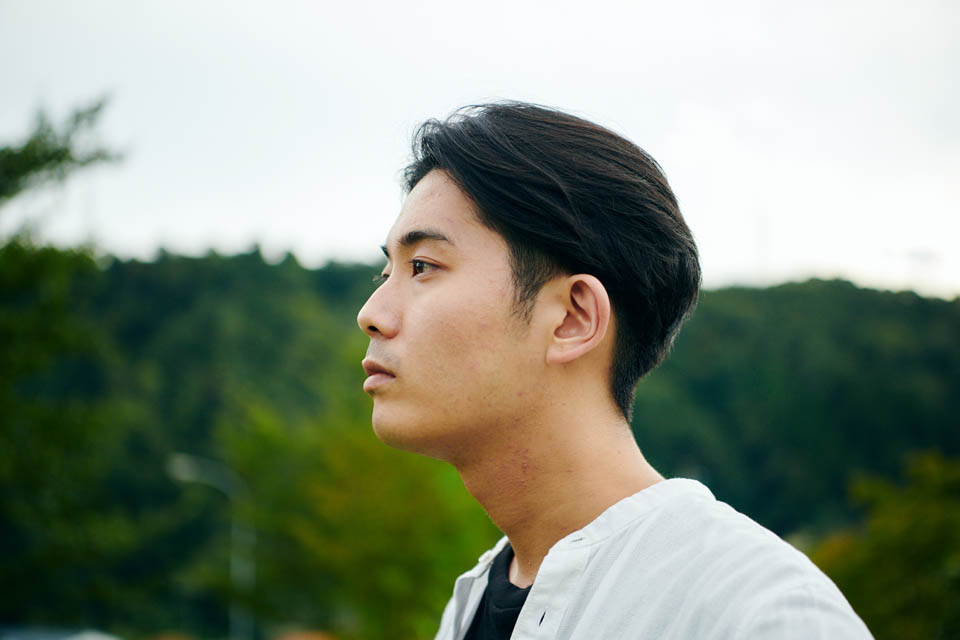
Yuta Orisaka
Orisaka: When I visited Echigo-Tsumari Art Triennale (ETAT) for the first time 10 years ago I had just began my career as a musician. To tell you the truth, I often get more inspiration from art than music. I remember that I brought back lots of important things that were significant to my expression.
What was deeply impressive was the fact that artworks stood in nature.
Orisaka: Unlike seeing artworks at art museums, artworks just came upon you all of a sudden. The boundaries for where the artwork ends and where nature begins are obscure. The place in which you live is the same land on which art stands – I felt such a “freedom” in that aspect.
The song “Asama”, which impressed Hikaru Utada, draws on Kita Karuizawa – which resonates with the landscape of Echigo-Tsumari.
The first place we headed was “House of Light”, an artwork as accommodation created during the 1st iteration of the ETAT by a prominent American artist, James Turrell, known for his magnificent works using light and space. Inspired by “In Praise of Shadows” by Junichiro Tanizaki, the building is inspired by traditional Japanese houses, and has a movable rooftop designed by Turrell.
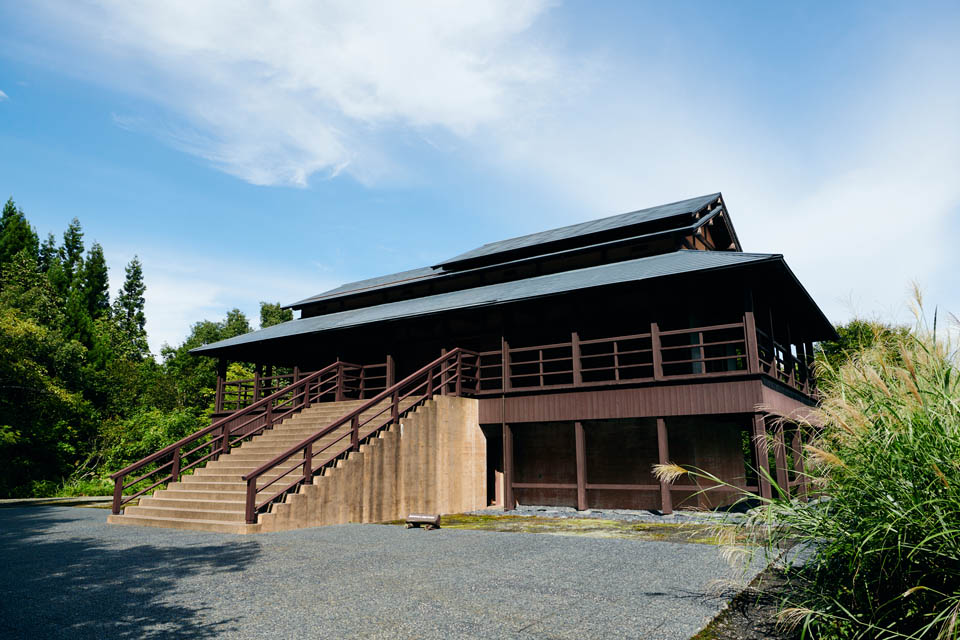
“House of Light” by James Turrell
An opening in the ceiling cuts out a square of sky, which is revealed when the roof slowly slides open.
Orisaka lies on his back on the tatami floor and whispers as he looks up into the sky.
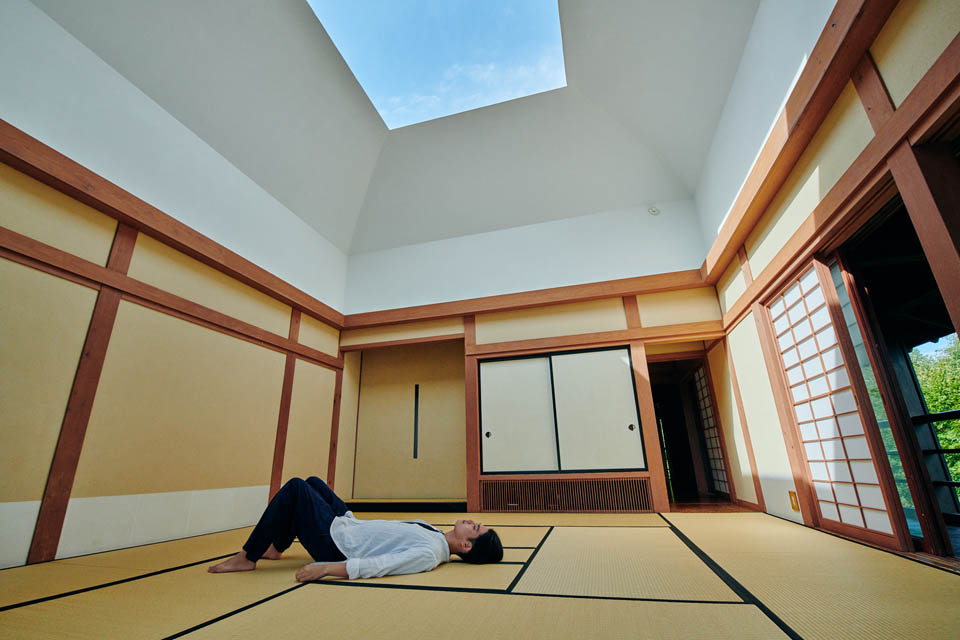
Orisaka: “You lose perspective. It is as if the sky was literally cut out and left in front of you.”
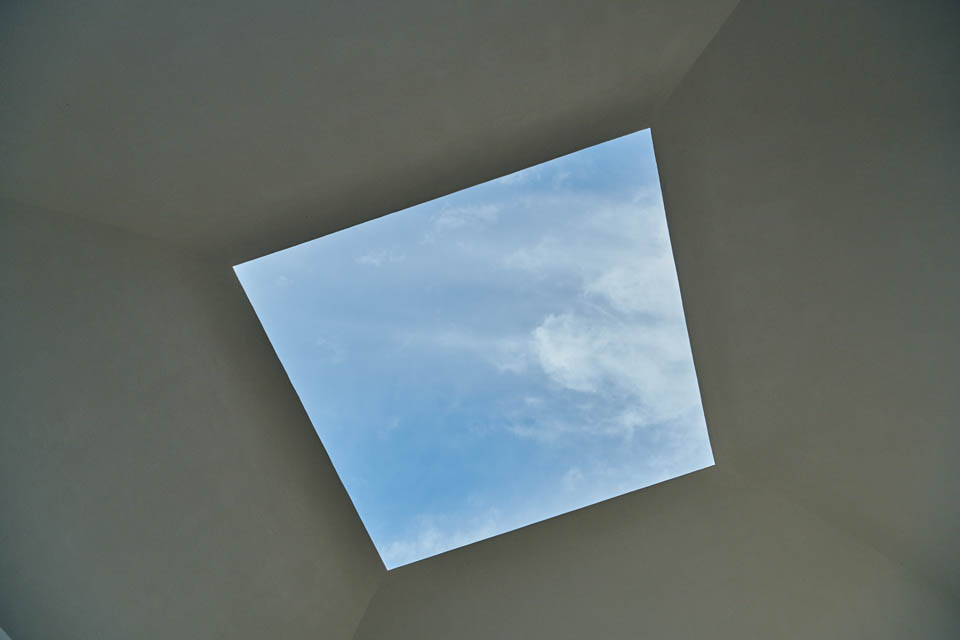
Light programs at dawn and dusk are designed for guests staying at House of Light to discover hidden colours in natural “white light” revealed through light projected onto the ceiling.
The expression of the sky and surrounding landscape changes minute by minute as time passes and the season changes. Stars appear in the sky at night and snow covers up the trees around the house. What Orisaka felt in the House of Light was the essence of Turrell’s artworks.
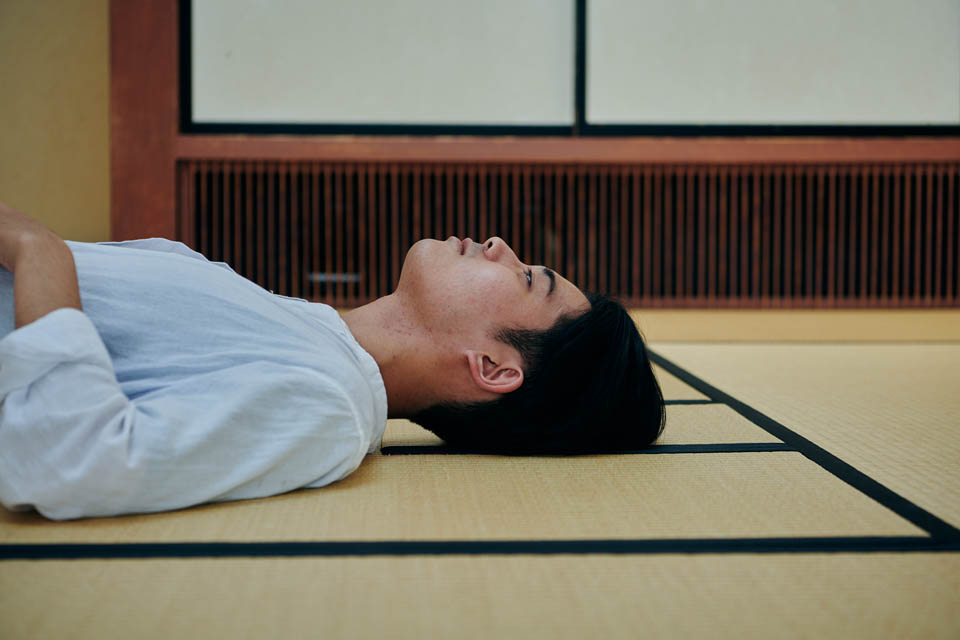
Orisaka: I have seen other artworks by Turrell. The difference from the pure white spaces of art galleries is that the sky is cut out in an ordinary tatami-mat room in a Japanese house. That is where you feel something different. The characteristic of the artist stands out even when his work is placed within a Japanese format that we are familiar with. I would say that “House of Light” markedly reveals the nature of Turrell’s noble works.
“House of Light” by James Turrell (2000)
“House of Light” was created in the first iteration of ETAT by Turrell, known as the artist of light. It was designed as “a guest house for meditation” and one of a few artworks by Turrell in which people are able to experience his perspective while they stay at the artwork. For details and booking please visit the official website.
House of Light official website
Please check opening seasons and hours as well as how to get there prior to your visit.
Feel culture (fudo) through space, food and earthenware at Ubusuna House
The next destination was Ubusuna House, an approximately 100-year-old minka house transformed into a restaurant. The entire house is an artwork where visitors can enjoy meals cooked by local people making the best use of local ingredients.
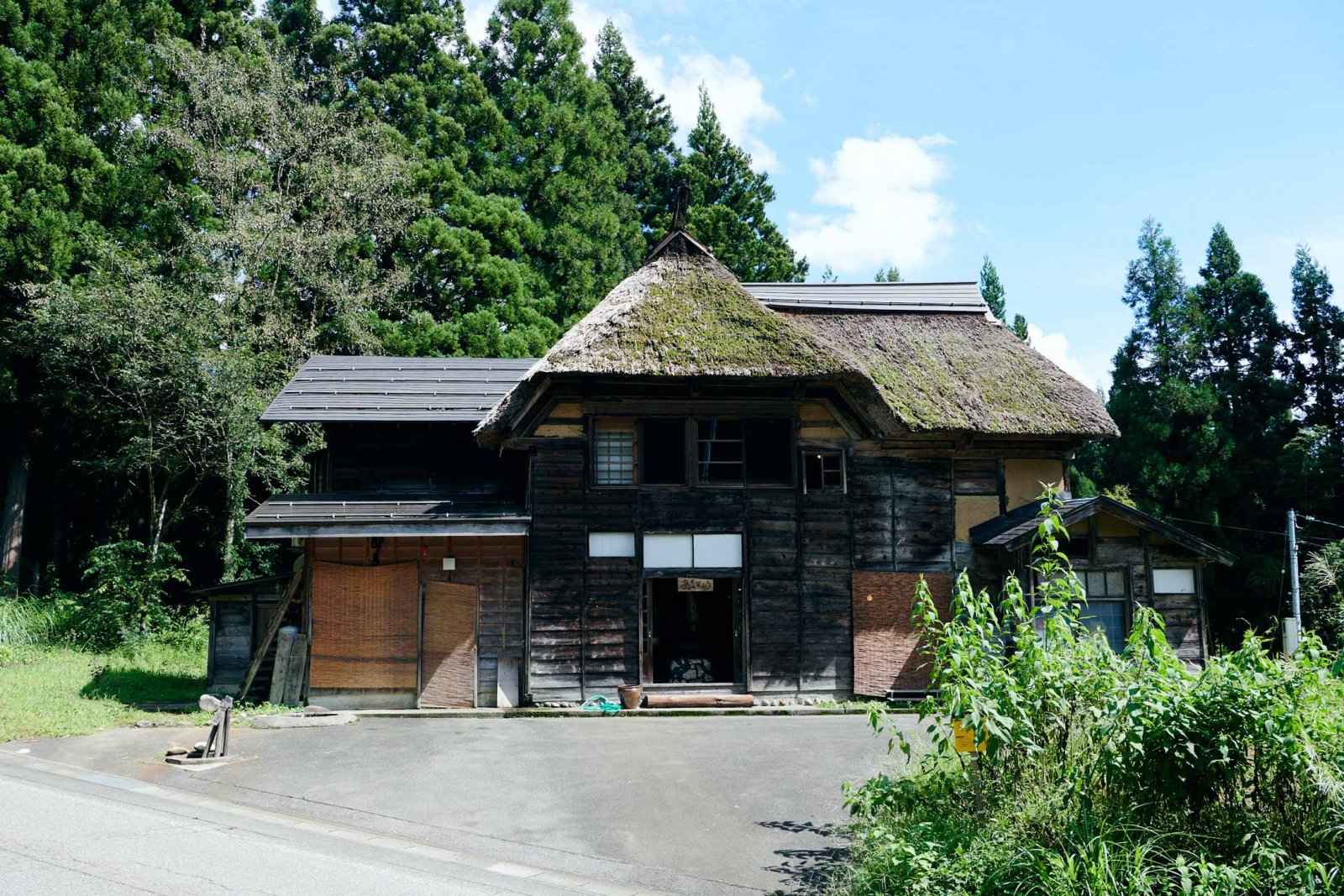
Master potters from across Japan created food plates and bowls, and other equipment in the house.
After appreciating the house’s timber framework using “nemagari-sugi” (bent-root cedar tree), a distinctive tree grown in harsh wind and snow, and master craftsman’s ceramics in their specific places in the house, it was time for a long-awaited lunch.
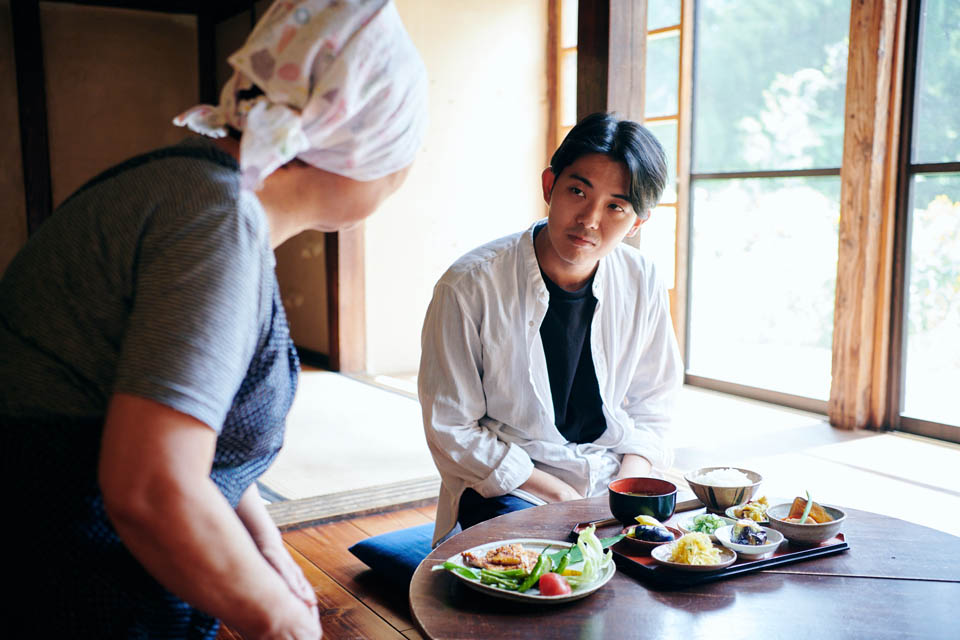
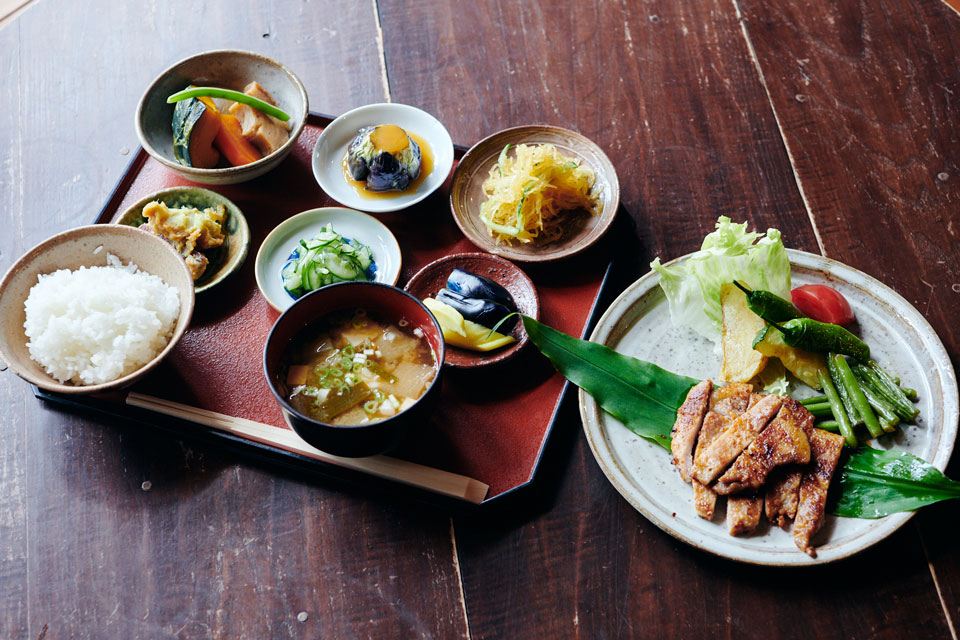
Orisaka was particularly taken by “Itouri” which became like noodles when heated. As he tucked into lunch, he asked “What does “Ubusuna” mean?”. The manager, Michiko Higuchi, told us that “Ubusuna is written using “birth and soil” in Chinese characters. It is one of the 8 million gods and guardian of the land”.
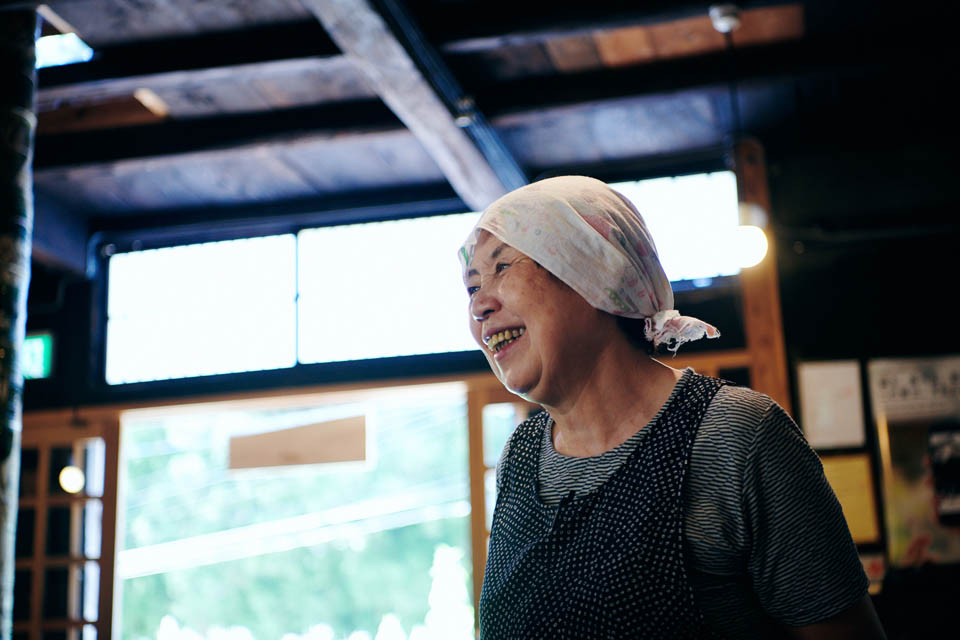
“This is such a beautiful place. The water is clean, the air is fresh and most of all the people are great!” The way local people including Michiko-san laughed and talked made Orisaka smile.
“The festival has become part of local people’s lives” – Orisaka was impressed and contemplated the character of a place and his own musical activity.
Orisaka: The landscapes of regional areas are interesting as they are all different, as if they are of foreign countries. As for my music, I have thought about music from the perspective of time, gave the title “Heisei” to my 2018 album. However, I believe the theme for 2019 should be “place”.
Orisaka: What I mean is that, for example, I launched a music band called “Juso” in Kyoto this year. I began this music band as there are distinctively different musical communities in Kyoto and Tokyo. This is fudo (local atmosphere), which can only be found in a specific place or a sensation that only makes sense to you when visiting such a place. I believe such things exist in every different region.
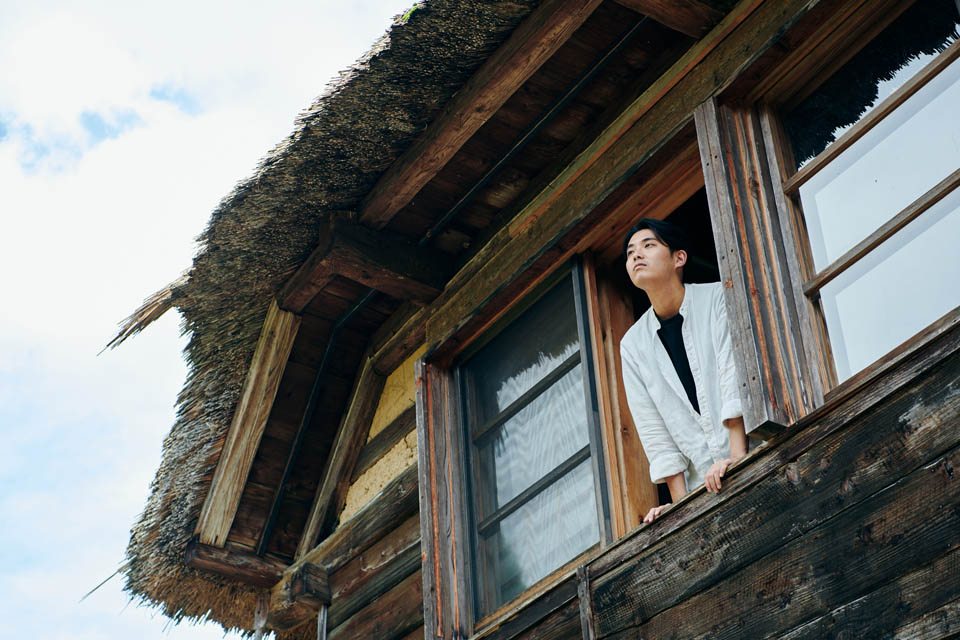
Orisaka: Although we are in a rather globalised era, the expression by every country has become more localised. Probing one place has rather become the way to expand to the outside. That is why I would like to invest my time in a place I find interesting and engage with people of such place.
Orisaka spoke with passion and remembered his impressions of the festival when he visited for the first time.
Orisaka: I was able to encounter many artworks which were irreplaceable as if they were rooted in Echigo-Tsumari. This experience must have been the trigger that I felt the strength in something that is rooted to a particular place.
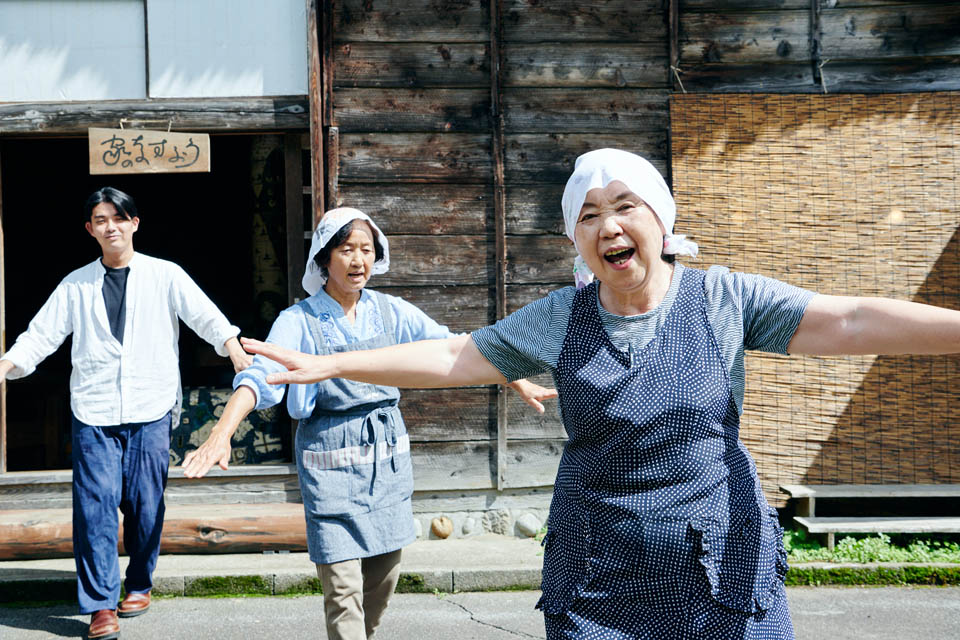
When leaving “Ubusuna House”, Michiko-san and other local people sang a local folk song called “Tokamachi-kouta” and danced as they saw off Orisaka-san.
Orisaka rather hesitantly joined in the dancing and said “my heart flutters when listening to these songs. Their voice is amazing and I wish I could remember and sing the song”.
Orisaka: My songs are influenced by traditional Japanese music such as Rokyoku and Kojo (the prologue at the start of Kabuki performances). Although I do not have any particularly distinctive roots as such, from the experience of matsuri (traditional local festivals) something like a basic melody becomes part of your body. I believe that having these faint traditions inside yourself as a base would make your songs stronger.
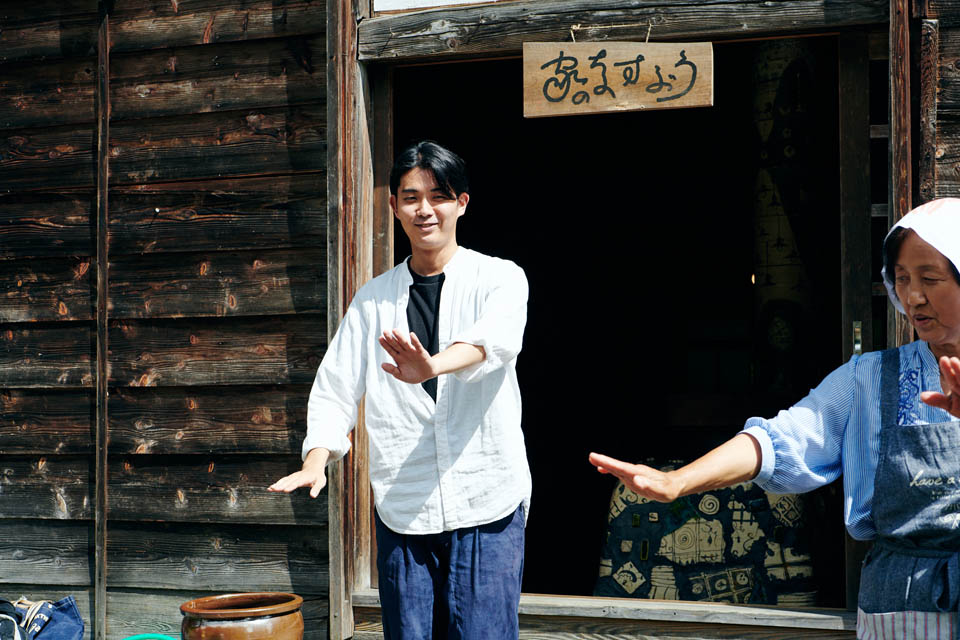
Orisaka: Pop music overseas are originally based on traditional music. Likewise, popular music in Japan has universality which has taken the essences of traditional music such as minyo and enka. This may relate to how to reflect locality in expression. How to present what is rooted to a particular place as it is, rather than diluting its origin. Such sense is much more closer to what I would like to pursue.
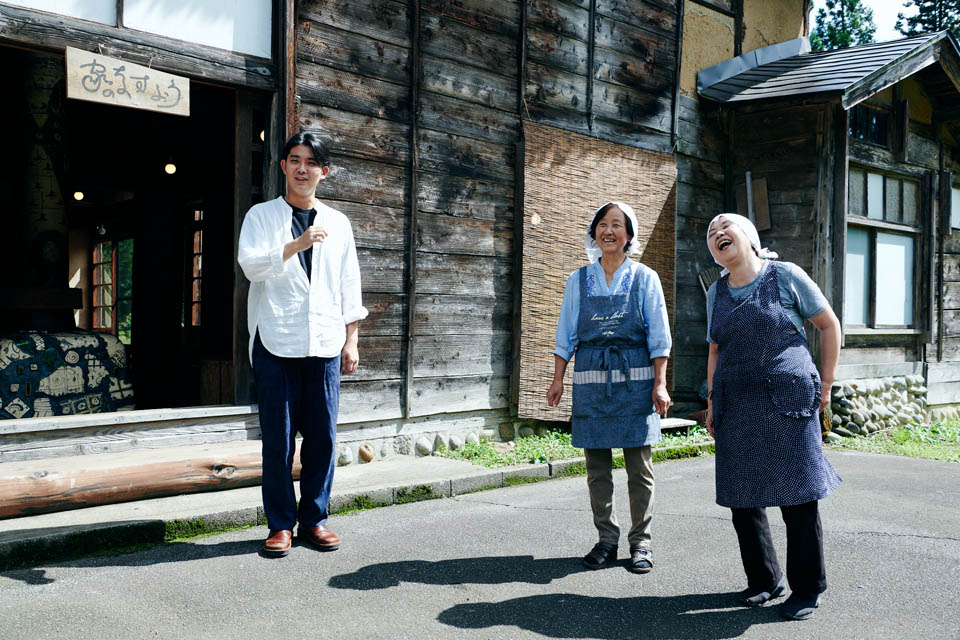
As his journey through the festival continues to deeper levels, Orisaka Yuta’s thought follows.
“Ubusuna House” (2006)
Built in 1924, Ubusuna House is one of the abandoned house projects of the festival, using ceramics to bring life to this classic Echigo-chumon zukuri house with a thatched roof. The irori (hearth), kamado (cooking stove), basin and bath tab were created by prominent potters across Japan and the house also functions as a restaurant where visitors can enjoy food cooked by local people using locally-grown ingredients and served in ceramic vessels created by these potters. The upper floor has three tearooms where ceramic artworks are displayed. Meeting and conversing with the lively locals is one of the reasons that visitors enjoy this place. Artistic direction was given by Yoshitoki Irisawa, editor-in-chef of “Tojiro” (a magazine featuring ceramics) whereas the renovation of the house was Kunihiro Ando, a scholar of wooden minka houses.
Ubusuna House – Echigo-Tsumari Art Field
Please visit the official website to confirm opening dates and hours and how to get there prior to your visit.
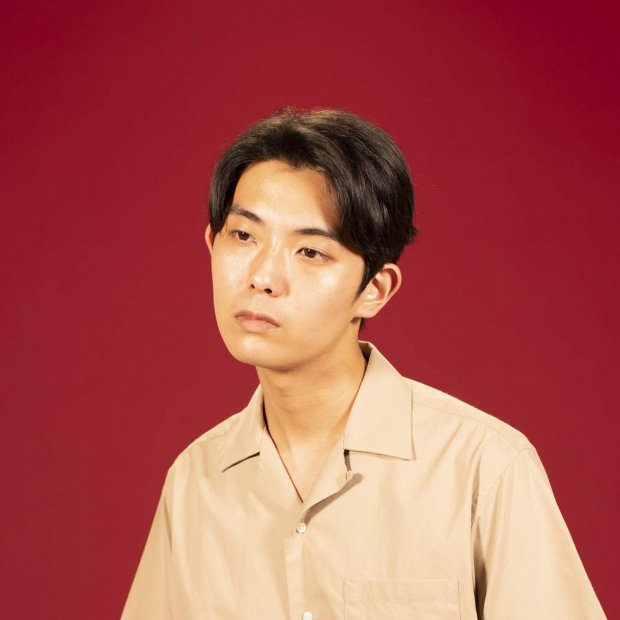
Profile
Yuta Orisaka
A singer song writer, born in the first year of Heisei (1989) in Tottori. After spending his childhood in Russia and Iran, he returned to Japan and lived in Chiba. He started live performance of singing with a guitar from 2013. In addition to his unique vocalism, he is a unique singer who has translated various genre of music he has been influenced by including blues, folk music and jazz into pop music. His music and live performance have been admired by Hikaru Utada, Gontiti, Masafumi Gotoh (ASIAN KUNG-FU GENERATION), Hikaru Ijuin, Shohei Oyamada (ex: andymori), Kyohei Sakaguchi, Saho Terao. The most recent music album, “Heisei” was released in October 2018. He was noted for visiting 23 places across Japan for “gold-coin” live performances as well as participated in various music festivals such as FUJI ROCK FESTIVAL 2018, RISING SUN ROCK FESTIVAL 2018 in EZO, and New Acoustic Camp in 2018.






